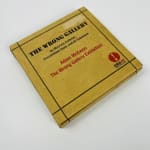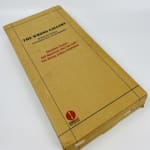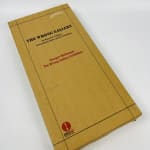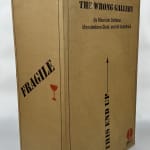Maurizio Cattelan
The Wrong Gallery (1:6 Scale) - Complete Set, 2005
Wood, brass, steel, aluminium, resin, plastic, glass and electric lighting
18 1/10 × 11 2/5 × 6 7/10 in. | 46 × 29 × 17 cm
edition of 2500 (only 1000 realized)
Further images
-
(View a larger image of thumbnail 1
)

-
(View a larger image of thumbnail 2
)

-
(View a larger image of thumbnail 3
)

-
(View a larger image of thumbnail 4
)

-
(View a larger image of thumbnail 5
)

-
(View a larger image of thumbnail 6
)

-
(View a larger image of thumbnail 7
)

-
(View a larger image of thumbnail 8
)

-
(View a larger image of thumbnail 9
)

-
(View a larger image of thumbnail 10
)

-
(View a larger image of thumbnail 11
)

-
(View a larger image of thumbnail 12
)

-
(View a larger image of thumbnail 13
)

If you ever visited the Wrong Gallery in New York, you might have been greeted by a blunt notice: 'Fuck Off We're Closed'. As it happens, the gallery, which launched...
If you ever visited the Wrong Gallery in New York, you might have been greeted by a blunt notice: "Fuck Off We're Closed". As it happens, the gallery, which launched in 2002 as the smallest exhibition space in New York, never actually opened. It was nothing more than an expensive-looking glass door, identical to those of the Chelsea white cubes it satirised. Viewers would peer through it into a meagre two and a half square feet of floor space, where in the course of its three-year existence the Wrong Gallery exhibited the work of 40 internationally acclaimed artists. Few passers-by would have guessed that the "Closed" sign - a piece by British artist Adam McEwen - was itself the work on view.
The Wrong Gallery's founders were Italian art-world jester Maurizio Cattelan and two editors turned curators, Massimiliano Gioni and Ali Subotnick; they jokingly referred to the sliver of a gallery as "the back door to contemporary art" - one that's "always locked". It was entirely non-commercial, literally only accessible to window shoppers. The name came about because, as Cattelan now explains: "We loved the idea of people saying: 'It's a great show, but it's in the wrong gallery.' "
The Wrong Gallery closed in 2005, and that same year a full-scale mock-up appeared on the third floor of the Tate Modern in London.
In homage, this 1:6 scale version of the same gallery makes the concept re-visitable, on a smaller scale but with great attention to detail (including door scuff marks etc.) and is complete with two small light bulbs (and a light switch disguised in the shape of a brick). Very rarely, this example comes complete with the only 6 different artist's 'shows' that were miniaturised for this edition - Adam McEwen, Lawrence Weiner, Elizabeth Peyton, Shirana Shahbazi, Keegan McHargue, Tommy White - to inter-change as you wish (with accompanying copy of the 'Wrong Gallery Times'). "The idea is that anyone can play at being a dealer at home," Cattelan says. "It is a sign of the times. In the 1960s every man could have become an artist; now everyone wants to make money."
Numbered from the edition of 2,500 (of which only 1,000 were realised) in black ink on the base, with the printed Cattelan/Subotnick/Gioni 2005 copyright stamp on the underside (with original box).
The Wrong Gallery's founders were Italian art-world jester Maurizio Cattelan and two editors turned curators, Massimiliano Gioni and Ali Subotnick; they jokingly referred to the sliver of a gallery as "the back door to contemporary art" - one that's "always locked". It was entirely non-commercial, literally only accessible to window shoppers. The name came about because, as Cattelan now explains: "We loved the idea of people saying: 'It's a great show, but it's in the wrong gallery.' "
The Wrong Gallery closed in 2005, and that same year a full-scale mock-up appeared on the third floor of the Tate Modern in London.
In homage, this 1:6 scale version of the same gallery makes the concept re-visitable, on a smaller scale but with great attention to detail (including door scuff marks etc.) and is complete with two small light bulbs (and a light switch disguised in the shape of a brick). Very rarely, this example comes complete with the only 6 different artist's 'shows' that were miniaturised for this edition - Adam McEwen, Lawrence Weiner, Elizabeth Peyton, Shirana Shahbazi, Keegan McHargue, Tommy White - to inter-change as you wish (with accompanying copy of the 'Wrong Gallery Times'). "The idea is that anyone can play at being a dealer at home," Cattelan says. "It is a sign of the times. In the 1960s every man could have become an artist; now everyone wants to make money."
Numbered from the edition of 2,500 (of which only 1,000 were realised) in black ink on the base, with the printed Cattelan/Subotnick/Gioni 2005 copyright stamp on the underside (with original box).













